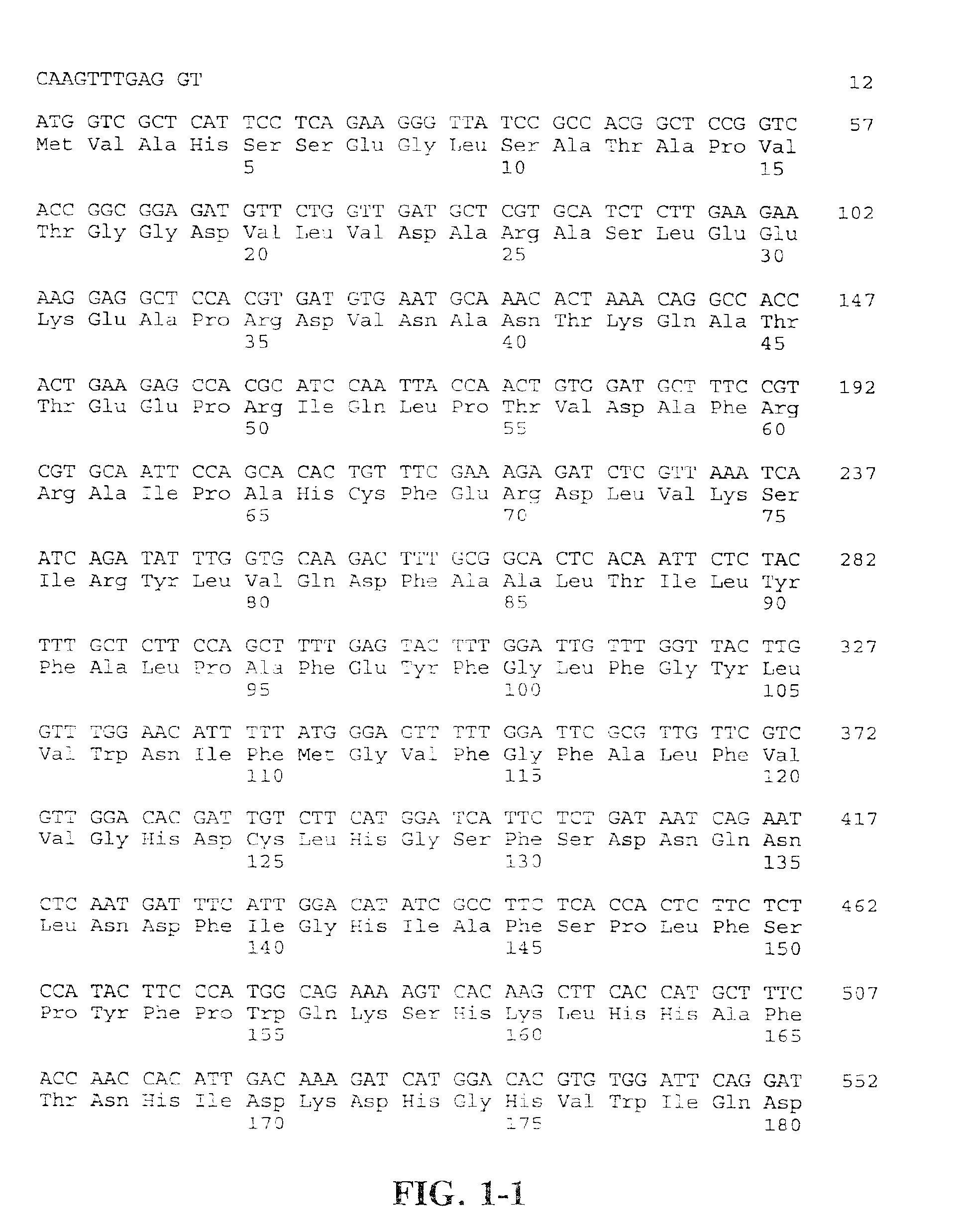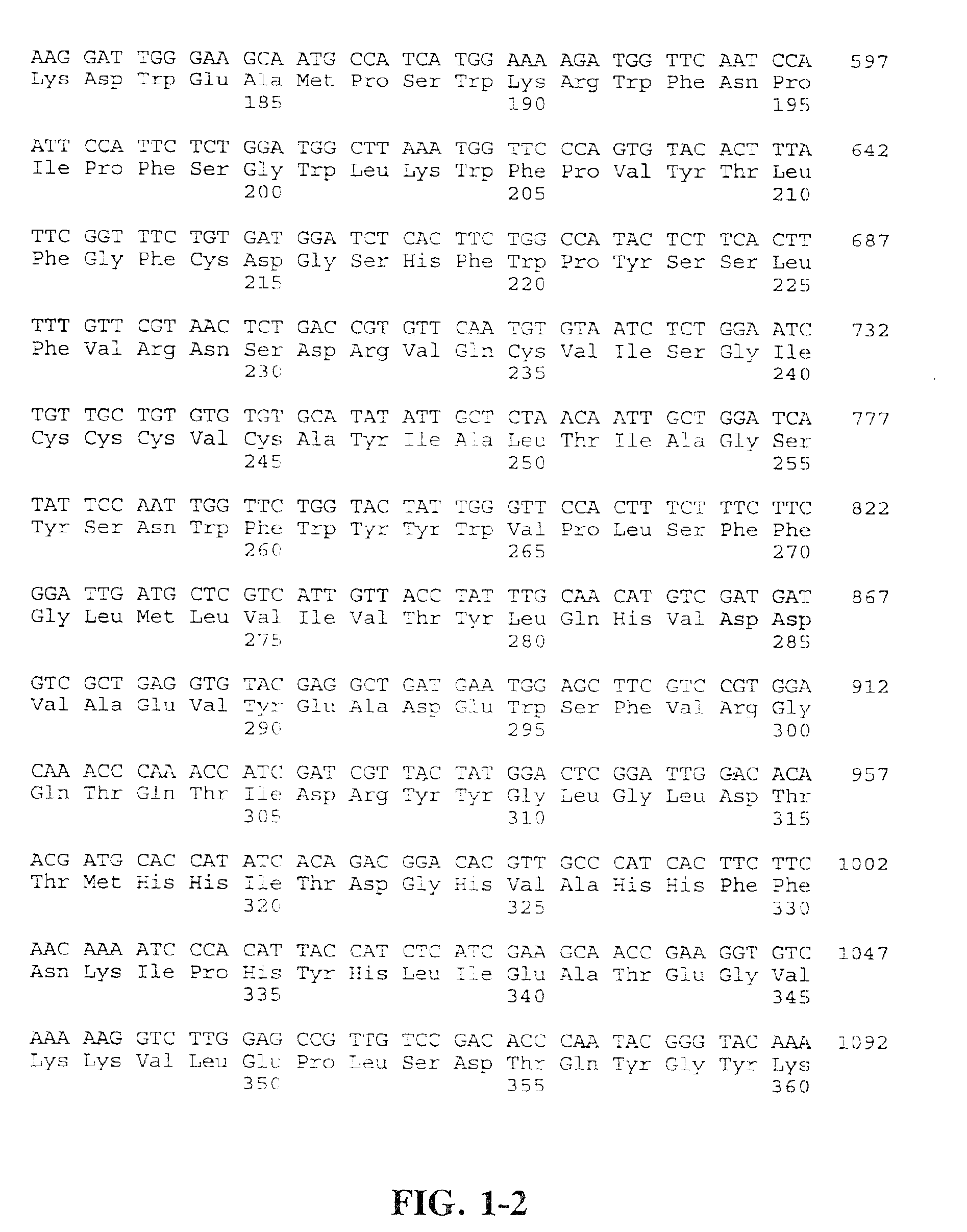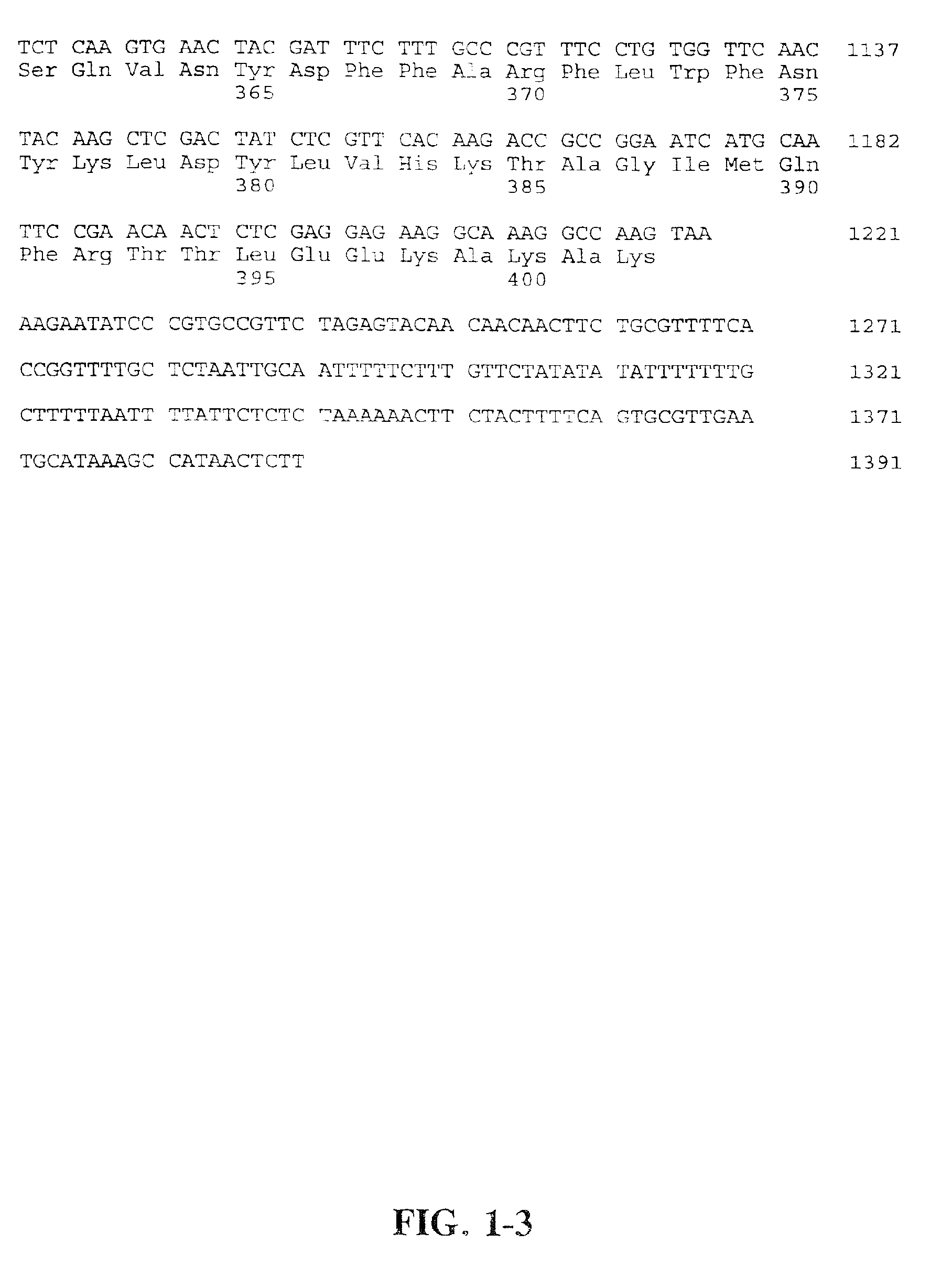Ω-3 fatty acid desaturase
a fatty acid desaturase and fatty acid technology, applied in the field of fatty acid metabolism, can solve the problems of limited progress in biochemistry and molecular genetics, and the biochemical study of membrane-bound fatty acid desaturases in plants has proved equally difficul
- Summary
- Abstract
- Description
- Claims
- Application Information
AI Technical Summary
Benefits of technology
Problems solved by technology
Method used
Image
Examples
example 1
The Cloning and Sequencing of a cDNA Encoding Fat-1, an Animal Omega-3 Desaturase
[0087]In Arabidopsis there are seven membrane desaturases. The biochemistry and function of these membrane desaturases has been facilitated by the availability of mutants with altered fatty acid compositions (Browse et al., Science 227:763-765, 1985) (Browse and Somerville, In: Arabidopsis, Cold Spring Harbor Press, New York, 1994, pp. 881-912). Genes encoding desaturases in Arabidopsis have been cloned (Arondel et al., Science 258:1353-1355, 1992; Yadav et al., Plant Physiol. 103:467-476, 1993; Yadav et al. in: Biochemistry and Molecular Biology of Membrane and Storage Lipids of Plants, ed. Murala and Somerville, American Society of Plant Physiologists, 1993, pp. 60-66; Okuley et al., Plant Cell 6:147-158, 1994). All the plant membrane-bound desaturases use complex glycerolipids rather than acyl-CoAs as substrates. This finding, together with data indicating that the Δ5 desaturase from rat liver acts o...
example 2
Expression of Fat-1 in Arabidopsis and Characterization of Its Function
[0099]To determine which class of reaction is catalyzed by FAT-1 and to explore the substrate chainlength and regiochemical specificities of the enzyme it was necessary to use heterologous expression of a fat-1 cDNA in a host that contained potential fatty acid substrates. Both Escherichia coli and Saccharomyces cerevisiae, which are two common laboratory hosts for heterologous expression, possess a very limited range of endogenous desaturation activities and hence fatty acid compositions. By contrast, plants possess both a wider range of desaturase activities and fatty acids that are potential substrates for a desaturase of unknown function. In addition, the lipid and fatty acid metabolism of plants, especially Arabidopsis, have been well characterized. These features make Arabidopsis a more attractive host for transgenic studies of putative eukaryotic fatty acid desaturases than either E. coli or S. cerevisiae....
example 3
Relative Efficiencies of the FAT-1 and FAD-3 Desaturases
[0113]A fat-1 cDNA confers to Arabidopsis plants the ability to desaturate 20:3, ω-6 and 20:4, ω-6 fatty acyl groups to the corresponding ω-3 products (Δ8,11,14,17-20:4 and Δ5,8,11,14,17-20:5, respectively). The absence of detectable levels of these ω-3 fatty acids from untransformed Arabidopsis tissues suggests that the endogenous plant ω-3 desaturases (the FAD3, FAD7 and FAD8 enzymes in Arabidopsis) have little or no ability to desaturate 20-carbon substrates. However, the fat-1 cDNA is highly expressed in the transgenic plant line #9.7.
[0114]To more accurately compare the relative efficiencies of the FAT-1 and FAD3 desaturases, we used a transgenic Arabidopsis line (wild-type:pTiDES3) in which the FAD3 gene is overexpressed to a high degree (Arondel et al., Science 258:1353-1355, 1992). Proportions of 18:2 and 18:3 in the root fatty acid composition produced in this line are altered to a slightly greater degree than in line ...
PUM
 Login to View More
Login to View More Abstract
Description
Claims
Application Information
 Login to View More
Login to View More - R&D
- Intellectual Property
- Life Sciences
- Materials
- Tech Scout
- Unparalleled Data Quality
- Higher Quality Content
- 60% Fewer Hallucinations
Browse by: Latest US Patents, China's latest patents, Technical Efficacy Thesaurus, Application Domain, Technology Topic, Popular Technical Reports.
© 2025 PatSnap. All rights reserved.Legal|Privacy policy|Modern Slavery Act Transparency Statement|Sitemap|About US| Contact US: help@patsnap.com



